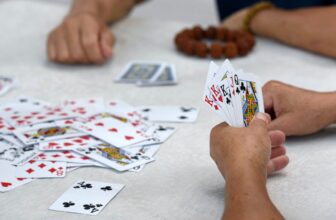It was 4 a.m. on July 4 at Camp La Junta in Kerr County when Kolton Taylor woke as much as the sound of screaming. The 12-year-old boy stepped away from bed and straight into knee-deep floodwaters from the close by Guadalupe River. Earlier than lengthy, the water had already risen to his waist. Within the darkness, he managed to really feel for his tennis sneakers floating close by, put them on, and escape to the protection of the hillside. All 400 individuals on the all-boys camp survived, whilst they watched one of their cabins float away within the speeding river. However 5 miles downriver at Camp Mystic, 28 campers and counselors have been killed.
The flash flooding in Texas would have been catastrophic at any time of day, but it surely was particularly harmful as a result of it occurred at evening. Analysis reveals that greater than half of deaths from floods occur after darkish, and within the case of flash floods, one research put the quantity nearer to three-quarters. Different hazards are extra perilous in the dead of night, too: Tornadoes that strike between sundown and dawn are twice as deadly, on common, as these through the day. Nobody can cease the solar from rising and setting, however specialists say there are easy precautions that may save lives when excessive climate strikes at evening. As local weather change supercharges floods, hurricanes, and fires, it’s changing into much more necessary to account for the added dangers of nocturnal disasters.
Stephen Strader, a hazards geographer at Villanova College, stated that at evening, it’s not sufficient to depend on a telephone name from a member of the family or out of doors warning sirens (which Kerr County officers discussed installing, however by no means did). The most secure guess is a NOAA radio, a tool that broadcasts official warnings from the closest Nationwide Climate Service workplace 24/7. One main benefit is that it doesn’t depend on cell service.
“That’s old-fashioned know-how, but it surely’s the factor that can wake you up and get you up at 3 a.m.,” stated Walker Ashley, an atmospheric scientist and catastrophe geographer at Northern Illinois College.
Even with warning, reacting in the midst of the evening isn’t straightforward. When individuals are shaken awake, they’re usually disoriented, requiring further time to determine what’s taking place earlier than they will soar into motion. “These valuable minutes and seconds are important a number of instances in these conditions for attending to security,” Strader stated.
The darkness itself presents one other problem. Individuals are likely to look outdoors for proof that climate warnings match up with their actuality, however at evening, they usually can’t discover the affirmation they’re on the lookout for till it’s too late. Some drive their automobiles into floodwaters, unable to see how deep it’s, and get swept away. It’s additionally tougher to evacuate—and attempt to rescue individuals—when you may barely see something. “I invite anyone to simply go stroll across the woods with a flashlight off, and also you learn the way troublesome it may be,” Ashley stated. “Think about making an attempt to navigate floodwaters or looking for shelter when you’re in speeding water at evening with no flashlight. It’s a nightmare.”
The logic applies to most hazards, however the evening downside seems the worst with sudden-onset disasters like tornadoes and earthquakes—and the early-morning flash floods in Texas, the place the Guadalupe rose 26 ft in 45 minutes. A hotter ambiance can maintain extra moisture, that means that storms can dump more water extra abruptly than they used to.
“We have now basically, due to local weather change, put the ambiance on steroids,” Strader stated. It’s on his to-do record to check whether or not different disasters, like hurricanes and wildfires, are deadlier at evening.
When Hurricane Harvey pummeled Texas with rain for days in 2017, individuals described waking up to water creeping into their homes; the Texas Nationwide Guard navigated rescue boats by means of neighborhoods in the dead of night, trying to find survivors. In recent times, hurricanes have rapidly intensified earlier than making landfall, fueled by hotter ocean waters. That shrinks the window by which forecasters can warn individuals a robust storm is coming. To compound the issue, on the finish of July, the Pentagon plans to stop sharing the government satellite microwave data that helps forecasters monitor hurricanes in a single day, leaving the nation weak to what’s known as a “dawn shock.”
Whereas daytime twister deaths have declined over time, nighttime fatalities are on the rise, Strader and Ashley have found in their research. (It’s nonetheless unclear as to how local weather change impacts tornadoes.) They discovered that tornadoes that contact down at evening are statistically extra prone to hit somebody, just because there are extra potential targets scattered throughout the panorama. Throughout the day, individuals are usually concentrated in cities and durable workplace buildings versus properties, which can be manufactured and never as structurally resilient to floods or excessive winds.
Evening provides dimensions of hazard to many sorts of disasters, however the darkness isn’t the one issue at play—and it doesn’t should be as lethal, Ashley stated, stressing the significance of getting a climate radio and making a plan in case the worst occurs. “Have a number of methods to get data, and your odds of survival are extraordinarily excessive, even in probably the most horrific twister state of affairs.”
This text initially appeared in Grist at https://grist.org/extreme-weather/the-surprising-reasons-floods-and-other-disasters-are-more-deadly-at-night/. Grist is a nonprofit, impartial media group devoted to telling tales of local weather options and a simply future. Study extra at Grist.org.
Trending Merchandise

SAMSUNG FT45 Sequence 24-Inch FHD 1...

ASUS RT-AX1800S Dual Band WiFi 6 Ex...












